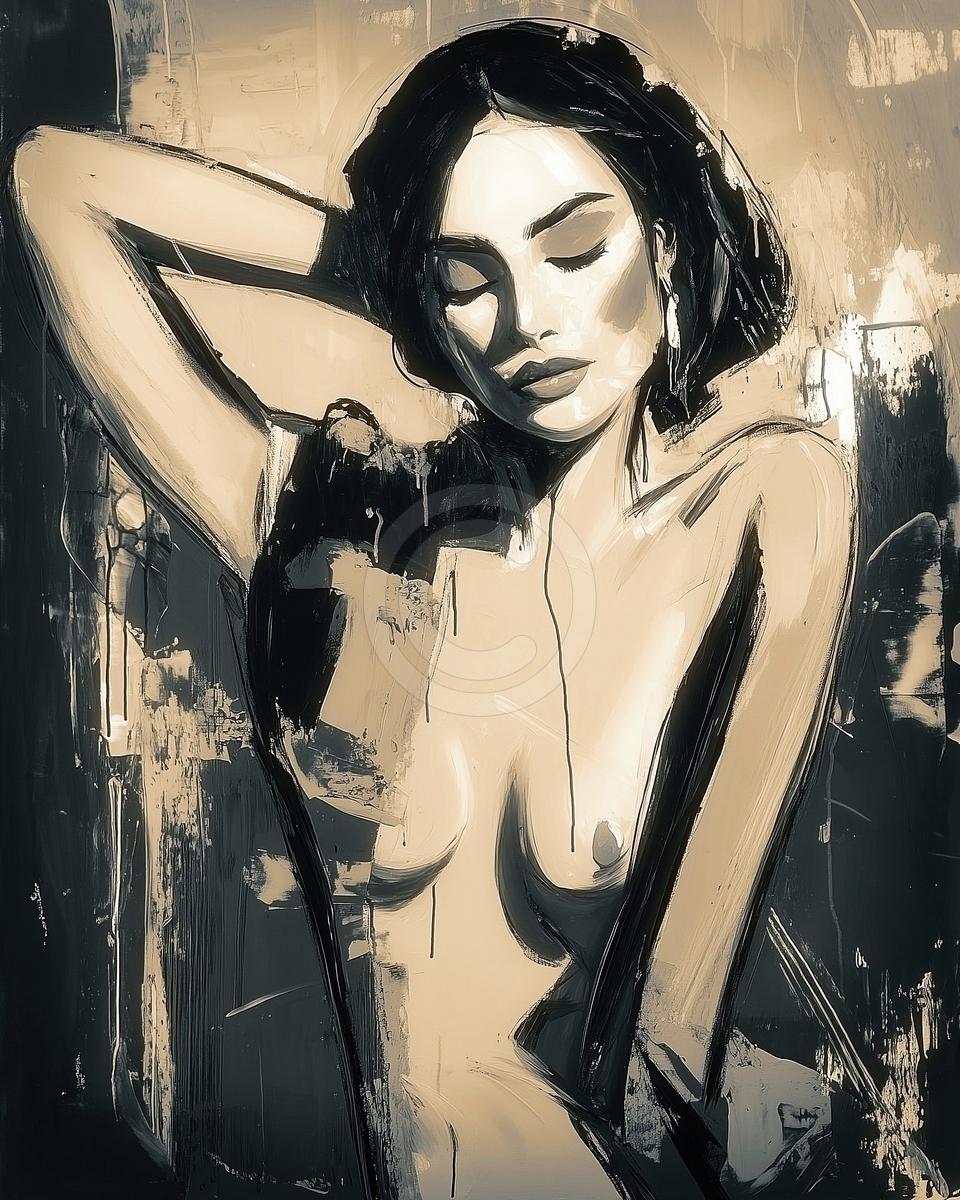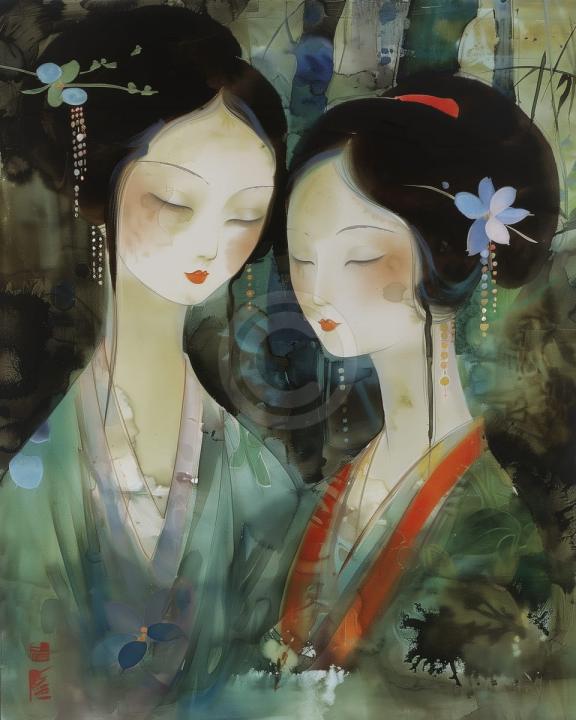Notifications

10 minutes, 0 seconds
-217 Views 0 Comments 0 Likes 0 Reviews

Nude paintings have captivated artists and audiences for centuries. Far more than representations of the unclothed human form, they are visual explorations of vulnerability, beauty, power, and identity. Across cultures and eras, the nude has been interpreted in countless ways: as divine, sensual, heroic, intimate, or rebellious. This article explores the evolution of nude art, its cultural implications, and its continued relevance in contemporary times.
The history of nude art stretches back to prehistoric times. Some of the earliest artifacts created by humans—figurines carved in stone or bone—depict voluptuous female forms. These figures are believed to be fertility symbols or representations of goddesses. In ancient civilizations like Mesopotamia and Egypt, the nude was often associated with spiritual or ritualistic contexts, seen in temple carvings or burial items. Nudity here wasn’t necessarily erotic; it symbolized purity, rebirth, or divine power.
The ancient Greeks elevated the nude to new heights of artistic achievement. For them, the unclothed body symbolized harmony, ideal proportions, and intellectual refinement. Greek sculptors and painters aimed to depict the perfect form, blending naturalism with idealism. Male nudes were particularly prominent in Greek art, often representing gods, athletes, or warriors. The female nude emerged more gradually, often shrouded in modesty or veiled symbolism.
The Romans inherited Greek artistic traditions but added their own flair. While they continued to produce idealized nudes, especially in sculpture, Roman art also embraced more naturalistic and even erotic representations. Wall frescoes, mosaics, and everyday items featured scenes of mythological or domestic nudity.
With the rise of Christianity in Europe, the perception of nudity changed dramatically. The human body came to be associated with sin and shame, influenced by Biblical narratives like Adam and Eve. Nude art declined, and when it did appear, it often carried moral or religious messages. Nudity was shown as a state of vulnerability or penance rather than beauty or divinity.
The Renaissance marked a rebirth of classical ideals and the rediscovery of ancient art. Artists began studying the human body again, conducting dissections and anatomical studies to understand muscles, posture, and proportion. Nudity returned as a central theme, imbued with new meaning: it was not only an artistic challenge but a symbol of intellectual and spiritual pursuit.
Leonardo da Vinci, Michelangelo, and Raphael were among the key figures who transformed the nude into a subject of profound depth. Michelangelo’s "David" and the nudes in the Sistine Chapel are prime examples of how the unclothed form was reimagined as heroic and divine. However, this renewed focus also sparked controversy. Religious authorities often clashed with artists, and many works were later censored or altered.
The Baroque period brought drama, emotion, and movement into nude art. Artists like Peter Paul Rubens celebrated the curves and vitality of the human body. His figures, particularly women, were lush, dynamic, and full of life. Nudity during this era was sensual and expressive, often woven into mythological or biblical narratives to make it more acceptable.
In contrast, the Rococo style of the 18th century leaned into playful eroticism. Artworks by Boucher and Fragonard, with their pastel tones and flirtatious poses, catered to aristocratic tastes. The nude was now a symbol of leisure and indulgence, often depicted in luxurious settings. However, critics also began to question the shallow idealism and decadence of such portrayals.
The 19th century brought dramatic shifts in art and society. As academic art continued to favor idealized nudes based on classical models, a new generation of artists emerged to challenge the status quo. Painters like Édouard Manet, Gustave Courbet, and Auguste Rodin presented nude figures in modern, everyday contexts. Manet’s "Olympia" shocked audiences by portraying a nude woman not as a goddess, but as a confident, contemporary individual.
These works stirred controversy not just for their content, but for their blunt style and confrontational tone. The nude was no longer distant or mythical; it was immediate, personal, and sometimes political. Realism aimed to depict life as it was, including the imperfections and social realities of the human body.
In the 20th century, nude art fragmented into diverse styles and interpretations. Cubism, Fauvism, Expressionism, and Surrealism all reimagined the body in abstract, distorted, or symbolic forms. Artists like Pablo Picasso, Egon Schiele, and Henri Matisse pushed the boundaries of how nudity could be portrayed, moving away from realism toward emotional or conceptual impact.
The nude also became a space for psychological exploration. Schiele's angular figures expressed vulnerability, desire, and isolation. Frida Kahlo used self-portraiture, sometimes in the nude, to delve into pain, identity, and femininity. As feminism and other social movements gained momentum, artists began questioning traditional depictions of the nude, especially those created by and for the male gaze.
Today, nude art continues to evolve in a complex cultural landscape. Artists explore themes of gender, sexuality, race, and body image through the human form. The nude is no longer confined to narrow ideals of beauty or morality. Instead, it is a vehicle for empowerment, critique, and innovation.
Photographic nudes, performance art, digital media, and mixed media have expanded the ways in which nudity is represented and interpreted. Artists like Jenny Saville depict the body in raw, unapologetic detail, challenging the sanitized and stylized versions often seen in mainstream media. Others explore the intersection of nudity and identity, using the body as a canvas for personal or political expression.
Controversy still surrounds nude art, especially in public or digital spaces. Social media platforms frequently censor artistic nudes, sparking debates about artistic freedom versus community standards. Nonetheless, the nude remains one of the most enduring and dynamic subjects in art.
Beyond galleries and museums, nude art has found a place in contemporary interiors. Abstract nude paintings, in particular, offer a subtle and elegant way to celebrate the human form. These works often blend soft lines, muted tones, and minimalist compositions, making them ideal for modern living spaces.
Nude paintings can add depth, sophistication, and emotion to a room. They evoke calm and introspection, while also serving as conversation pieces. Whether displayed in bedrooms, studios, or private collections, these artworks bring a sense of timeless beauty and human connection.
For those interested in exploring nude art for their own spaces, PastelBrush's Nude Collection offers a curated selection of abstract nude paintings. The collection features pieces that blend artistic sensitivity with contemporary design, perfect for adding a refined touch to your home.
Nude paintings are far more than depictions of the unclothed body. They are expressions of humanity in its most honest form—raw, beautiful, fragile, and strong. From ancient fertility symbols to avant-garde self-portraits, the nude has served as a mirror of cultural values and individual expression.
As our understanding of identity and aesthetics continues to evolve, so too does the role of the nude in art. It remains a powerful, provocative, and poetic form of visual language, inviting us to reflect on our own perceptions of self, society, and beauty.
The Art of the Nude: A Journey Through Beauty... 0 0 0 83 3
3 photos

